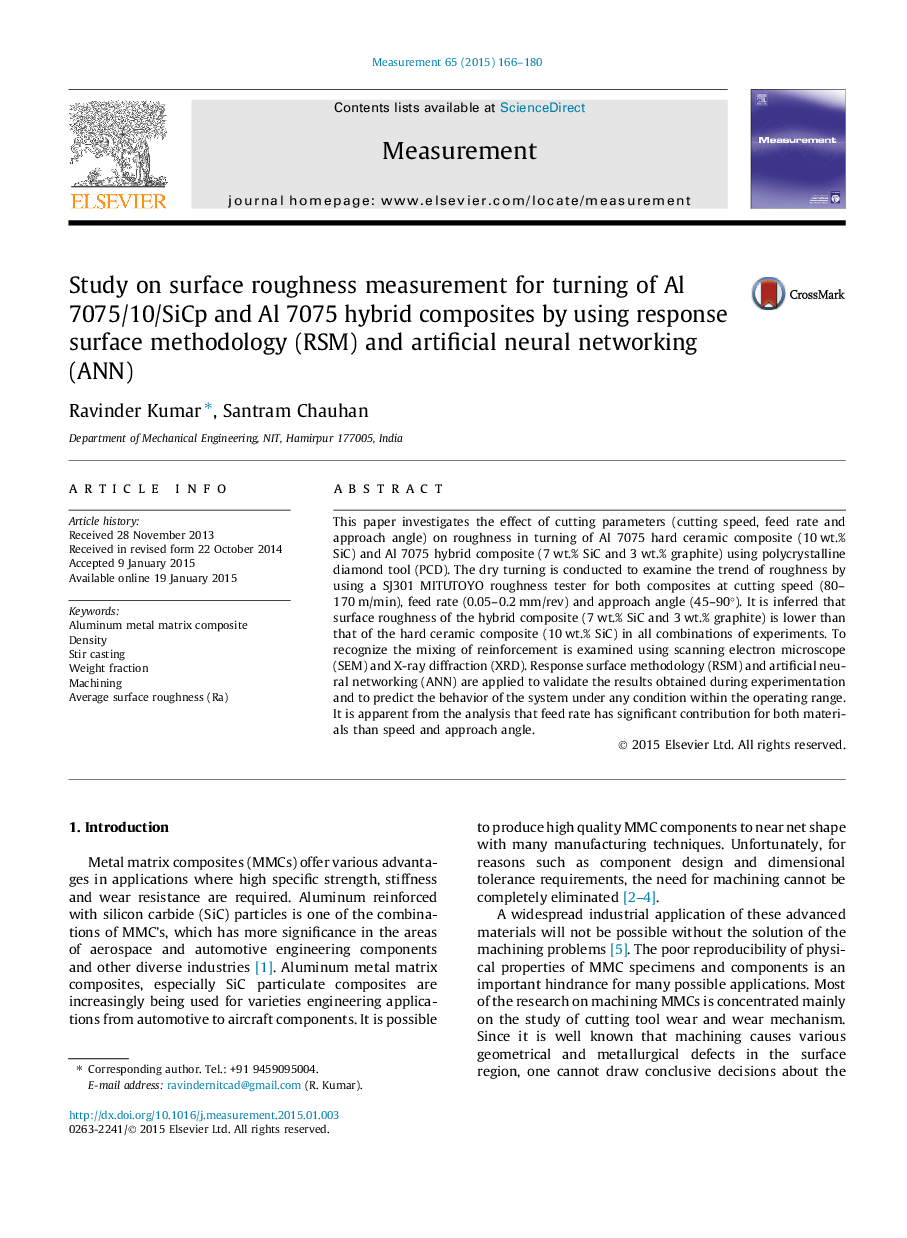| Article ID | Journal | Published Year | Pages | File Type |
|---|---|---|---|---|
| 729859 | Measurement | 2015 | 15 Pages |
•We examine the effect of the self lubricant particle (graphite) as compared to hard ceramic.•Increase in feed rate increase the surface roughness in both the composite material.•Machining properties of the composite material is improved by adding lubricant particle (graphite).
This paper investigates the effect of cutting parameters (cutting speed, feed rate and approach angle) on roughness in turning of Al 7075 hard ceramic composite (10 wt.% SiC) and Al 7075 hybrid composite (7 wt.% SiC and 3 wt.% graphite) using polycrystalline diamond tool (PCD). The dry turning is conducted to examine the trend of roughness by using a SJ301 MITUTOYO roughness tester for both composites at cutting speed (80–170 m/min), feed rate (0.05–0.2 mm/rev) and approach angle (45–90°). It is inferred that surface roughness of the hybrid composite (7 wt.% SiC and 3 wt.% graphite) is lower than that of the hard ceramic composite (10 wt.% SiC) in all combinations of experiments. To recognize the mixing of reinforcement is examined using scanning electron microscope (SEM) and X-ray diffraction (XRD). Response surface methodology (RSM) and artificial neural networking (ANN) are applied to validate the results obtained during experimentation and to predict the behavior of the system under any condition within the operating range. It is apparent from the analysis that feed rate has significant contribution for both materials than speed and approach angle.
